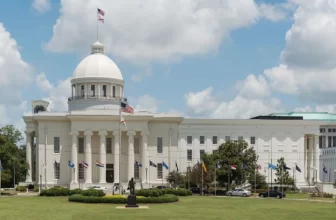The cannabis industry faces unique legal challenges, particularly when it comes to financial restructuring and bankruptcy. While traditional pathways for bankruptcy are not available to plant-touching marijuana businesses in the United States due to federal restrictions, alternative routes such as Chapter 15 of the U.S. Bankruptcy Code and state-level protections offer potential lifelines. This article explores these options, providing a comprehensive understanding of the financial restructuring landscape for distressed cannabis companies.
The Controlled Substances Act and Its Impact on Bankruptcy
Cannabis remains classified as a Schedule 1 drug under the Controlled Substances Act (CSA), which significantly impacts the ability of marijuana-related businesses to seek traditional bankruptcy protection. The CSA’s classification means these businesses cannot comply with non-bankruptcy laws stipulated by the U.S. Bankruptcy Code. Consequently, courts dismiss almost all Chapter 7, 11, or 13 cases involving cannabis entities as their reorganization plans would be considered non-confirmable under current federal law.
Potential Violations and Court Decisions
Bankruptcy courts often cite reasons related to federal law violations for denying protection to marijuana businesses. Managing a cannabis business estate during bankruptcy proceedings could constitute gross mismanagement because it violates the CSA. Therefore, trustees or debtors-in-possession are barred from effectively managing the estate within the confines of federal regulations.
Exploring Chapter 15: An Alternative Pathway
Chapter 15 of the U.S. Bankruptcy Code offers an alternative path for cannabis businesses by recognizing foreign bankruptcy proceedings. Since marijuana is legal in nine countries outside the United States, a foreign representative can appeal to a U.S. bankruptcy court to recognize a foreign proceeding. If recognized, this allows certain protections and management opportunities that are otherwise unavailable under traditional U.S. bankruptcy chapters.
State Law and Receiverships
Even if Chapter 15 provides a potential route for bankruptcy recognition, it does come with complexities. Asset management and receiverships are governed by state law, which means interstate variations can complicate proceedings. In states where marijuana markets are regulated, receivers can manage cannabis-related assets, creating nuanced and varied paths for financial restructuring depending on local laws.
Challenges and Questions Around Chapter 15
Despite its potential, Chapter 15 is not a catch-all solution for financially distressed cannabis companies. Several legal questions remain unresolved. Issues surrounding the management of assets across different states and potential conflicts between federal and state jurisdictions continue to pose significant hurdles. These ambiguities necessitate careful navigation through the legal landscape to achieve appropriate outcomes.
The Role of State-Level Protections
As federal avenues remain largely closed, state-level protections become critical for cannabis businesses. Some states provide specific guidelines and protections for troubled cannabis companies, allowing them some leeway in managing financial distress. These state provisions can sometimes work in tandem with Chapter 15, offering pathways toward stabilization and possible recovery.
Navigating Financial Distress in the Cannabis Sector
The road to financial recovery for cannabis businesses in the U.S. involves navigating a complex web of federal restrictions and leveraging the limited alternatives available. While traditional bankruptcy avenues remain inaccessible due to cannabis’ federal status as a Schedule 1 drug under the CSA, Chapter 15 of the U.S. Bankruptcy Code and various state-level protections present viable albeit complicated options. By understanding the intricacies of these pathways, cannabis companies can better strategize their approaches to financial distress and seek sustainable solutions amidst a challenging legal environment.





